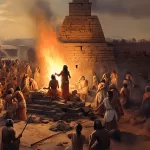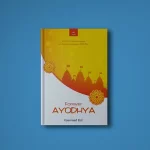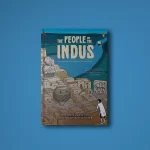Dharma Yoga: A Guide For An Odyssey Into Forest Eternal
Dharma Yoga Volume-I: Beliefs And Practices In Hinduism. Ravi Swaminathan and Ananth. Rupa & Co. Pages 352. Rs 496.
Creating a systematised, cartographic knowledge guide for Hindu Dharma is like creating a guide map for a tropical rain forest. It is tough. It is challenging, and it can almost never be complete.
Gardens can have precise guide books and path-maps. But tropical forests can only have approximations. And even such approximations are brave attempts.
It needs organic intelligence and a deeper sense of aesthetics, which in turn is connected to the evolutionary time-sense, to create a valid attempt.
Such attempts will invariably turn into beautiful, meaningful and useful works.
The book under review is Dharma Yoga’ (Rupa, 2023) by Ravi Swaminathan and Ananth.
The authors are well aware of the uniqueness of the subject in hand. So they give specific instructions as to how to use the book.
There are nine guidelines, like not to go in a linear manner and to embrace ambiguity and do not look for shallow consistency and not go for literal meanings or English terms etc.
These guidelines surely should impress the readers with the special nature of the book.
Even in this style, the book is a comprehensive, and holistic approximation of Hindu Dharma.
It is divided into seven ‘Khandas’.
The first Khanda deals with a general introduction.
The second deals with seven principles which the author considers as the basic seven beliefs or sapta shraddha.
The author equates shraddha to ‘a leap of faith’. The choice of the word ‘faith’ may not do complete justice to ‘shraddha’ though. It has a specific and dominant connotation and is rooted in books of revelations and not the paths of realisation.
One hopes the author will look out for a better substitute for Shraddha.
Delightfully the authors are quite aware of this aspect of Hinduism and they quote Mahatma Gandhi:
Faith…must be enforced by reason…when faith becomes blind, it dies.
The authors should reconsider their notion of almost equating Ishwara with Brahman. Ishwara is Brahman with the influence of Maya, and even within the Aastika system, we find a branch of Sankhya known as Nir-Iswara Sankhya. Using the term ‘Brahman’ alone would have been more appropriate.
The breaking down of the four Purusharthas into 15 life objectives is indeed a very useful and deeply meaningful exercise pregnant with possibilities for the students – both as pragmatic application in their lives and in creating a Hindu dimension in the science of psychology.
One hopes that the book becomes a major study material and this feature of the book is taken up by teachers in shaping the young minds.
The book also explains the problematic aspect of Hindu society – the so-called caste. The way the book presents this aspect is in a way a crucial test for any book on Hindu Dharma.
The book again admirably excels and presents a holistic picture – neither falling into sly-support nor getting into radical denouncement:
The jati system was actually a system of tight-knit local communities. It enabled a social network, a support system for its members in times of difficulty, was a repository of traditions, and provided social capital and professional training. As a solid block, it was difficult to wean individuals away from the jati and into an alien religion.
Then they proceed to point out how the very strengths have become its weaknesses particularly in modern times:
Ironically, its two greatest strengths were also its greatest weaknesses. The loyalty of the members was more to the sampradaya than the larger sangha (community) of dharma followers. … Again, somewhere down the line (and this intensified during the colonial times), the jatis were stratified into rigid hierarchical groups where there was little social or professional mobility, and jati at the so-called lower end of the social scale was marginalized and often humiliated.
The book hence never slips into shrill or convoluted arguments.
The authors also repeatedly present appropriate anecdotes, stories from oral as well as literary traditions in an appropriate way. Especially noteworthy is the incident in Kanaka Dasa’s life where Krishna Himself opens the wall to convey the message of social equality, presented in a compelling manner.
The seventh Khanda is ‘Frequently Asked Questions’.
There are 20 questions with such varied topics like ‘whether Hinduism venerates fair skin?’, to Tantric cults to ‘if Hindus fear conversions?’, to ‘if vegetarianism is needed in Hinduism?’.
Thus the authors have covered all the ways in which a young inquisitive mind would approach the subject and have provided guidelines to travel through the Dharma–Aaaranya – the forest of Dharma and have made the adventure a Yoga.
This book is a welcome addition to the increasing number of efforts to take Dharma to the next generation in a manner that resonates with them. The authors should be congratulated for doing justice to such a grand task. And this is going to be an encyclopaedic work as this is just Volume-I.





